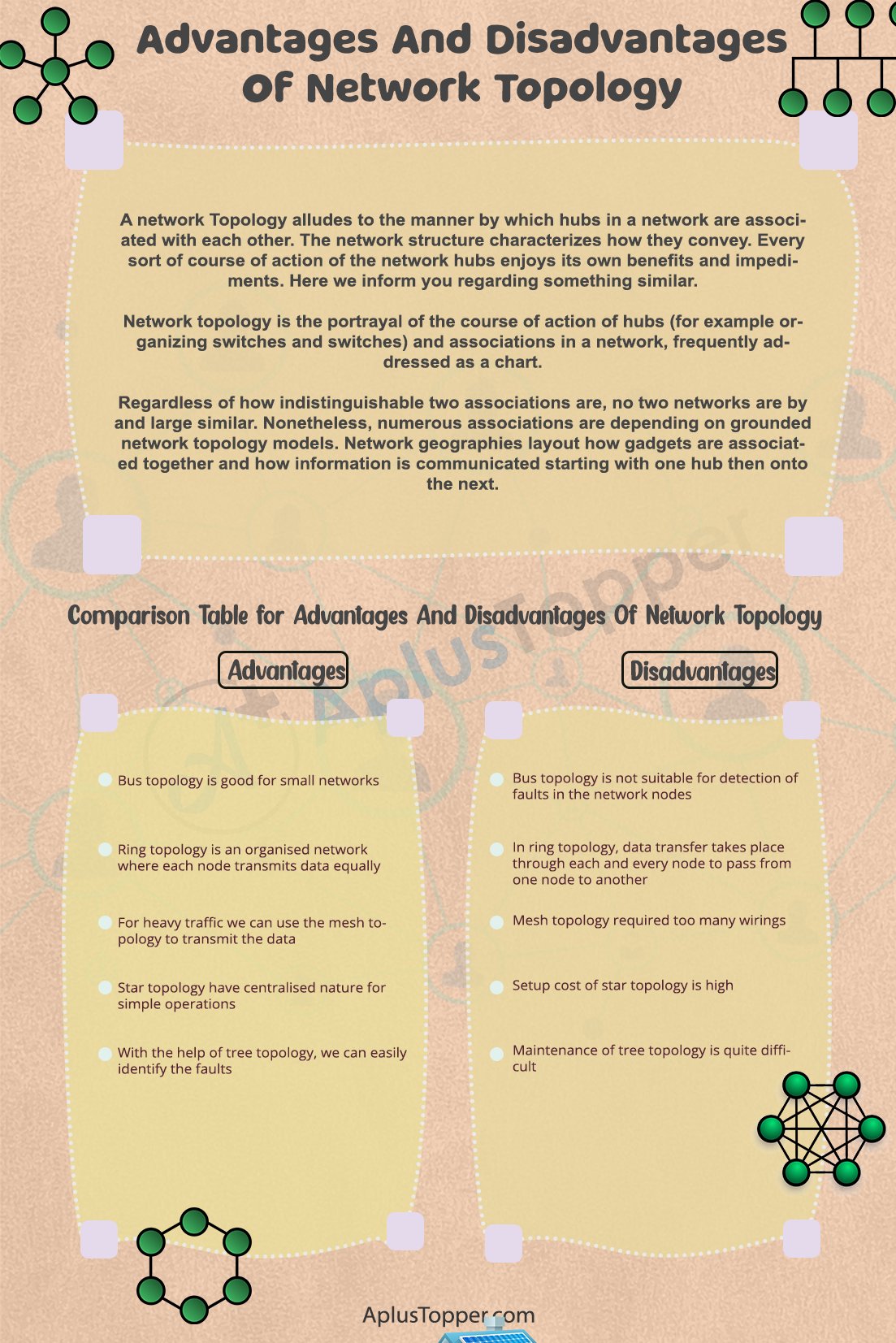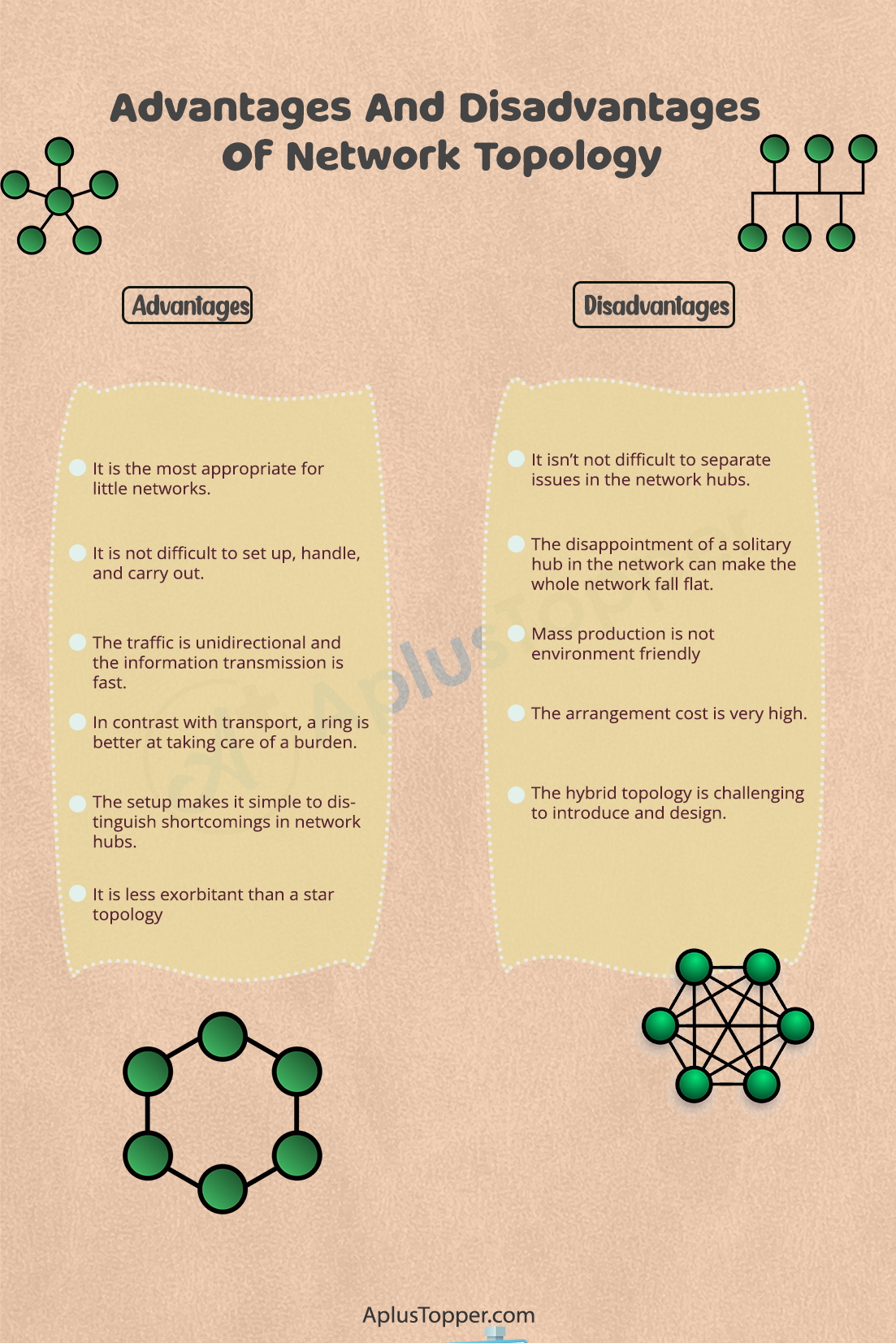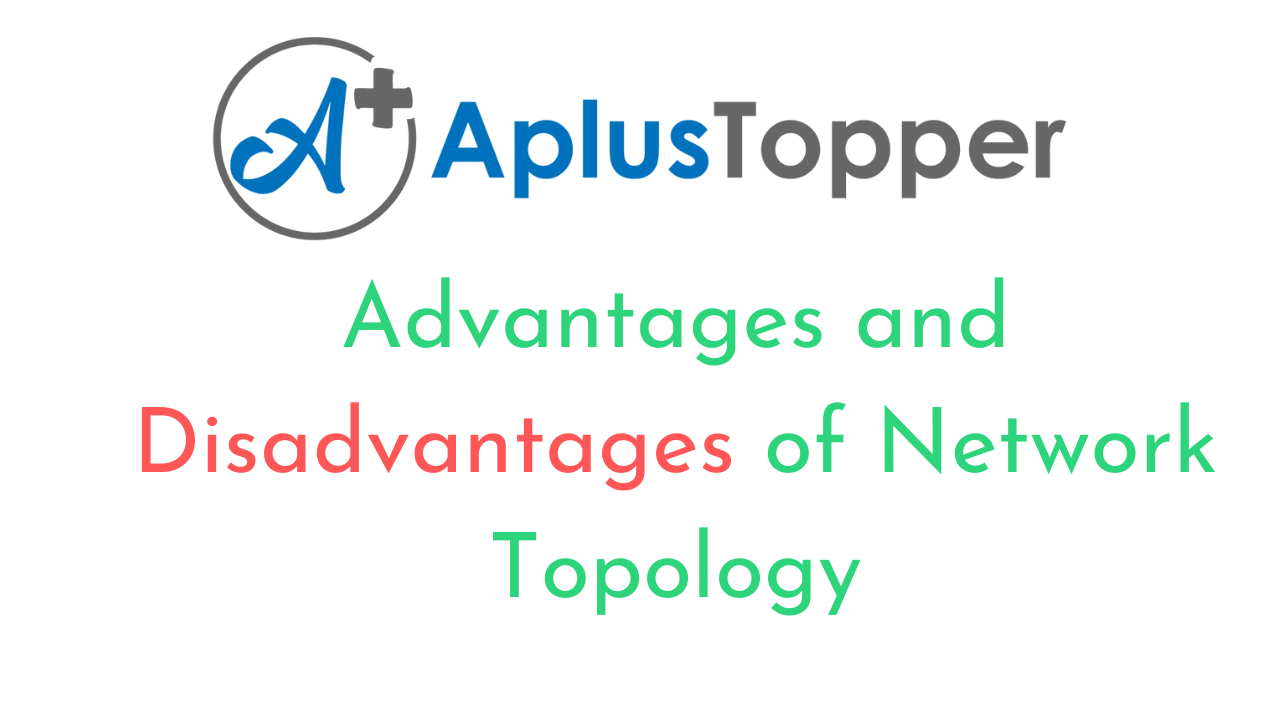Advantages And Disadvantages Of Network Topology: Network alludes to the arrangement of gadgets (hubs) associated by correspondence joins. A hub can be a PC, printer, or some other gadget fit for sending or potentially getting information created by different gadgets on the network.
Topology alludes to the way wherein the network of PCs is associated. Every Topology is fit to explicit errands and has its own advantages and disadvantages. The decision of Topology is subject to sort of utilization, number of hardware being utilized, pace of information move required, reaction time, and cost.
The word network Topology is utilized to clarify the way wherein a network is genuinely associated. The point is to trade the information like text, sound/video, and pictures starting with one point then onto the next.
Students can also find more Advantages and Disadvantages articles on events, persons, sports, technology, and many more.
What is Network Topology? Advantages And Disadvantages Of Network Topology 2022
A network Topology alludes to the manner by which hubs in a network are associated with each other. The network structure characterizes how they convey. Every sort of course of action of the network hubs enjoys its own benefits and impediments. Here we inform you regarding something similar.
Network topology is the portrayal of the course of action of hubs (for example organizing switches and switches) and associations in a network, frequently addressed as a chart.
Regardless of how indistinguishable two associations are, no two networks are by and large similar. Nonetheless, numerous associations are depending on grounded network topology models. Network geographies layout how gadgets are associated together and how information is communicated starting with one hub then onto the next.
A sensible network topology is a theoretical portrayal of how gadgets work at specific layers of deliberation. An actual topology subtleties how gadgets are truly associated. Consistent and actual geographies can both be addressed as visual graphs.
A network topology map is a guide that permits a director to see the actual network design of associated gadgets. Having the guide of a network’s topology close by is exceptionally helpful for seeing how gadgets interface with one another and the best methods for investigating.
The advantages and disadvantages of network topology depend upon its types.
- Bus topology
- Ring topology
- Star topology
- Mesh topology
- Tree topology
- Hybrid topology
BusTopology: Simple design and modest yet helpless against disappointment and just appropriate for low traffic volumes. Not utilized for office networks today, yet can, in any case, be found inside some custom items.
Ring Topology: Easy to oversee and with a generally safe of impact yet dependent on all hubs being controlled up and in full working request. Seldom utilized today.
Star Topology: All gadgets are associated with a focal switch, which makes it simple to add new hubs without rebooting all as of now associated gadgets. This topology utilizes links and is not difficult to oversee. Then again, the strength of the switch is imperative. This topology requires observation and support. Notwithstanding, it is a usually experienced topology.
Tree Topology: A various leveled format that joins together gatherings of hubs. Makes parent-kid conditions between root hubs and ordinary hubs. This format can be defenseless against disappointment assuming a root hub has an issue. This topology is muddled and hard to oversee and it utilizes a lot of links.
Mesh Topology: Each hub is associated with each and every mode with an immediate connection. This topology makes a truly dependable network, yet requires a lot of links and is challenging to manage. Wifi networks make this topology more doable.
Hybrid Topology: Combines at least two of the standard geographies. This can be a decent answer for rapidly interfacing together unique existing networks into a brought together framework. Try not to confound the expression “crossover network topology” with “half breed framework” – a term that is applied to the mix of on-location and cloud assets.
Advantages Of Network Topology
We will discuss here the advantages of each type of network topology.
Bus Topology Advantages
- It is the most appropriate for little networks.
- It is not difficult to set up, handle, and carry out.
- It costs extremely less.
Ring Topology Advantages
- The information being communicated between two hubs goes through every one of the moderate hubs. A focal server isn’t needed for the administration of this topology.
- The traffic is unidirectional and the information transmission is fast.
- In contrast with transport, a ring is better at taking care of a burden.
- The adding or eliminating of network hubs is simple, as the interaction requires changing just two associations.
- The setup makes it simple to distinguish shortcomings in network hubs.
- In this topology, every hub has the chance to communicate information. Accordingly, it is an extremely coordinated network topology.
- It is less exorbitant than a star topology
Star Topology Advantages
- Because of its incorporated nature, the topology offers effortlessness of activity.
- It likewise accomplishes disconnection of every gadget in the network.
- Adding or eliminating network hubs is simple, and should be possible without influencing the whole network.
- Because of the unified nature, it is not difficult to recognize flaws in the network gadgets.
- As the examination of traffic is simple, the topology presents lesser security hazards.
- Information bundles don’t need to go through numerous hubs, as on account of a ring network. Along these lines, with the utilization of a high-limit focal center, traffic burden can be taken care of at a genuinely good pace.
Tree Topology Advantages
- The tree topology is valuable in situations where a star or transport can’t be executed independently. It is most-fit in systems administration in different branches of a college or enterprise, where every unit (star portion) works independently, and is likewise associated with the fundamental hub (root hub).
- The upsides of centralization that are accomplished in a star topology are acquired by the singular star fragments in a tree network.
- Each star portion gets a committed connection from the focal transport. Subsequently, fizzling of one portion doesn’t influence the remainder of the network.
- Issue recognizable proof is simple.
- The network can be extended by the expansion of auxiliary hubs. Subsequently, versatility is accomplished.
Mesh Topology Advantages
- The course of action of the network hubs is to such an extent that it is feasible to send information from one hub to numerous different hubs simultaneously.
- The disappointment of a solitary hub doesn’t make the whole network fall flat as there are substitute ways for information transmission.
- It can deal with weighty traffic, as there are devoted ways between any two network hubs.
- Highlight point contact between each pair of hubs, makes it simple to recognize flaws.
Hybrid Topology Advantages
- The hybrid topology is more viable as it utilizes numerous geographies.
- The hybrid topology contains the best and effective elements of the consolidated topologies from which it is built.

Disadvantages Of Network Topology
We will discuss here the advantages of each type of network topology.
Bus Topology Disadvantages
- It isn’t not difficult to separate issues in the network hubs.
- It is reasonable for networks with low traffic. High traffic increments load on the transport, and the network effectiveness drops.
- The link length is restricted. This restricts the quantity of network hubs that can be associated.
- This network topology can perform well just for a set number of hubs. Whenever the quantity of gadgets associated with the transport builds, the effectiveness diminishes.
Ring Topology Disadvantages
- The disappointment of a solitary hub in the network can make the whole network fall flat.
- The development or changes made to organize hubs influence the whole network’s exhibition.
- Information sent starting with one hub then onto the next needs to go through every one of the halfway hubs. This makes the transmission more slow in contrast with that in a star topology. The transmission speed drops with an expansion in the quantity of hubs.
- There is weighty reliance on the wire interfacing the network hubs in the ring.
Star Topology Disadvantages
- Network activity relies upon the working of the focal center. Subsequently, focal center disappointment prompts disappointment of the whole network.
- Likewise, the quantity of hubs that can be added, relies upon the limit of the focal center.
- The arrangement cost is very high.
Tree Topology Disadvantages
- As various fragments are associated with a focal transport, the network relies vigorously upon the transport. Its disappointment influences the whole network.
- Inferable from its size and intricacy, support is difficult and costs are high. Likewise, design is troublesome in contrast with that in different geographies.
- However it is adaptable, the quantity of hubs that can be added relies upon the limit of the focal transport and on the link type.
Mesh Topology Disadvantages
- The game plan wherein each network hub is associated with each and every hub of the network, numerous associations fill no significant need. This prompts overt repetitiveness of many network associations.
- A great deal of cabling is required. Hence, the costs caused in arrangement and upkeep are high.
- Attributable to its intricacy, the network of a lattice network is troublesome.
Hybrid Topology Disadvantages
- The hybrid topology is somewhat more complicated than different geographies.
- The hybrid topology is challenging to introduce and design.
Comparison Table for Advantages And Disadvantages Of Network Topology
| Advantages | Disadvantages |
| Bus topology is good for small networks | Bus topology is not suitable for detection of faults in the network nodes |
| Ring topology is an organised network where each node transmits data equally | In ring topology, data transfer takes place through each and every node to pass from one node to another |
| For heavy traffic we can use the mesh topology to transmit the data | Mesh topology required too many wirings |
| Star topology have centralised nature for simple operations | Setup cost of star topology is high |
| With the help of tree topology, we can easily identify the faults | Maintenance of tree topology is quite difficult |

FAQs on Pros and Cons of Network Topology
Question 1.
What are the advantages and disadvantages of network topology?
Answer:
Because of its brought together nature, the topology offers effortlessness of activity. It likewise accomplishes detachment of every gadget in the network. Adding or eliminating network hubs is simple, and should be possible without influencing the whole network. Because of the concentrated nature, it is not difficult to recognize deficiencies in the network tools.
Question 2.
What are the advantages and disadvantages of ring topology?
Answer:
The advantages of ring topology are better administration, one directional flow of data, frequent adaptability, network fidelity. The disadvantages of ring topology are slow rate of activity, insecure data use, poor device attachment.
